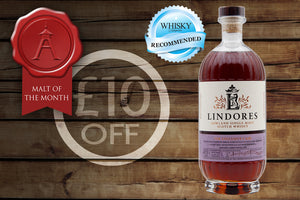
Aberlour
Aberlour distillery was founded in 1879 by James Fleming who had made his fortunate from humble origins as the son of a local farmer. Noticing the high demand for grain...
Aberlour
Aberlour distillery was founded in 1879 by James Fleming who had made his fortunate from humble origins as the son of a local farmer. Noticing the high demand for grain throughout Speyside for distilling, he became a grain merchant and sold barley to local distilleries. The next logical step was to gain experience at the nearby Dailuaine distillery, before building a distillery of his own called Aberlour-Glenlivet.
James was very attached to Aberlour and spent a considerable sum improving the infrastructure in the area by financing a local hospital and the village hall. Following the death of a young child trying to cross the River Spey (Scotland’s fastest-flowing river), he ensured a Victorian suspension bridge was built in to prevent such another tragedy, by leaving the necessary funds following his death in 1895. Known as the Penny Bridge due to the toll to cross, it remains in use today but is thankfully free to use.
History tells us that there was a previous Aberlour distillery dating from the 1820’s, but this was ravaged by fire in the 1870’s. There is some speculation that the same site was reused by Fleming, as no trace of the original has been found. Fire was a common threat to distilleries with the volatile mix of directly fired stills, alcohol and dust from the mill creating a sizeable hazard. James undeterred, purchased land on the outskirts of the village where the distillery remains today. The site was partially selected due to the prominence of the St Drostan’s Well, as a vital water source for distilling with the river Lour running down into the Spey.
In 1898 most of the distillery was destroyed by a severe fire with only a couple of buildings being saved and these are easily identified during the distillery tour with the former Brewer’s Cottage now renamed the Fleming rooms being the oldest survivor. Fortunately, we have some details of the original distillery thanks to the visit of Alfred Barnard during the 1880’s and surviving photographs which form part of the distillery visitor experience. Barnard was quite taken with Aberlour proclaiming it to be a perfect model distillery set over 2 acres in a distinctive triangular block of stone buildings. Its replacement was designed by none other than Charles Doig who designed many famous distilleries including Ardbeg, Highland Park, Talisker and for the most part the Aberlour we can visit today is his vision.
The distillery changed owners in 1892, as Fleming had underestimated the cost of maintaining a distillery in full production. It remained in the hands of R. Thorne & Sons until 1921, when W.H. Holt & Sons Limited took ownership before 1945 when S. Campbell and Sons Limited took over and extended the distillery. During this period the distillery supported their popular House of Campbell’s White Heather and Clan Campbell blends. It also went on to provide malt for the King’s Ransom and House of Lords bottlings proving its value to blenders.
Since then Aberlour has followed the trends seen across Scottish distilleries regarding production methods with the closure of its floor maltings in 1962, followed by the doubling of the stills to four in total in 1973. During the midst of the still room expansion, workmen found a bottle buried in the foundations that was wrapped in newspaper from 1898 covering the aforementioned destructive fire. The story that is retold during the tour is that the workmen happily began to enjoy their bonus before the manager was informed of their discovery and immediately confiscated the remnants. This bottle is today the oldest known example and was used as the inspiration for the popular Aberlour A’Bunadh (Gaelic for the original) series after being analysed at the company laboratory.
In 1974 the Aberlour was purchased by Pernod Ricard (Chivas Brothers), as their first distillery acquisition and they remain the current owners today. Under their guidance Aberlour has enjoyed great success particularly in France where it is the largest selling single malt. Pernod Ricard were keen to take advantage of the prominence of the distillery that sits beside the main A95 road and even to this day remains on the outskirts of the village. In 2002 the visitor facilities were improved and the distillery offers a worthwhile tour with a comprehensive tasting experience. Of particular note is the option to bottle-your-own from either an ex-bourbon or sherry cask for around £60.
The Aberlour range of whiskies today are noted for their approachability, subtle sherry cask integration (excluding the aforementioned A’Bunadh), gentle fruity flavours and a clean finish. They are attractively priced with the 10 and 12-year-olds often being cited as everyday whiskies, or a starting point for those wishing to experience the influence of a sherry cask.


